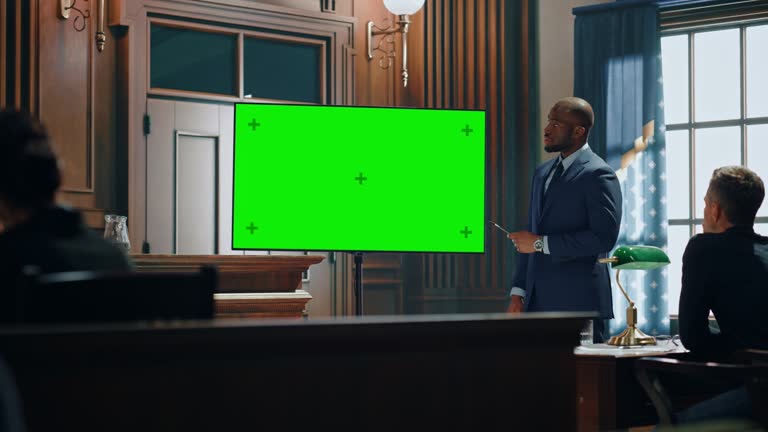Navigating the Intricacies of Trial Presentations: Tips for Seamless Distribution and Compelling Debates
In the world of lawful proceedings, the art of trial presentation stands as a vital factor of success. The complexities inherent in trial presentations call for a delicate balance of skill, ability, and approach.

Understanding Trial Goals
To properly navigate a trial, it is vital to have a clear understanding of the purposes that need to be achieved. Before tipping right into the court room, lawful teams should define their goals and preferred end results. These purposes work as guiding principles throughout the trial, shaping methods and affecting decision-making procedures.
Recognizing test purposes entails a comprehensive analysis of the case, legal precedents, and the client's benefits. Trial Presentations. It requires a precise evaluation of the facts, identifying essential issues, and anticipating potential challenges. By setting specific and quantifiable objectives, lawyers can tailor their presentations and arguments to align with the preferred outcomes
In addition, a clear grip of trial objectives enables lawful groups to prioritize evidence, witnesses, and lawful debates successfully. It permits the development of a coherent story that resonates with the discretionary, enhancing the general case discussion.

Organizing Evidence Efficiently
Having a clear understanding of test goals lays the foundation for arranging evidence properly in legal proceedings. By lining up the presentation of proof with the desired end results of the trial, lawful teams can reinforce their disagreements and enhance their persuasiveness.
One more key component in organizing proof effectively is developing a rational flow. Providing proof in a meaningful and consecutive manner can aid build an engaging story that supports the lawful disagreements being made. Furthermore, using aesthetic aids such as charts, charts, or timelines can even more boost the organization of proof and aid in clarifying complicated relationships or sequences of occasions.
In addition, guaranteeing that all proof offered is pertinent and admissible to the situation is crucial. Inadmissible or unimportant proof can interfere with the strength of the argument and potentially hurt the reputation of today celebration. As a result, a thorough review and selection process ought to be carried out to consist of just one of the most impactful and legitimately audio proof in the test discussion.
Crafting Influential Stories
Crafting engaging narratives plays a crucial function in presenting convincing arguments throughout legal process. When building a narrative for a test presentation, it is crucial to establish a clear story that highlights crucial points and continue reading this connects them in a systematic way. By weaving with each other evidence, testament, and legal debates into a influential and cohesive story, legal experts can effectively promote for their customers read the article and enhance the chance of a beneficial end result in the courtroom.
Understanding Visual Aids
Reliable use visual help is key to improving the influence and clarity of trial discussions. Aesthetic aids, when used purposefully, have the power to streamline complex info, enhance key points, and leave an enduring impact on the discretionary. To grasp aesthetic help in test presentations, it is important to make certain that they are clear, succinct, and relevant to the arguments being made.
When integrating aesthetic help, such as graphes, pictures, timelines, or charts, into a trial discussion, it is important to maintain them visually appealing yet professional. The visuals must match the spoken debates, giving an aesthetic depiction of the details being discussed without frustrating the target market with unneeded information.
In addition, exercising with the aesthetic help in advance is imperative to ensure a smooth distribution throughout the test. Familiarizing oneself with the material, transitions, and timings of each visual help can aid keep the circulation of the presentation and avoid technical glitches that might develop.
Providing Impactful Closing Disagreements
A compelling closing debate serves as the end result of a trial discussion, encapsulating the core story and convincing the court and jury in the direction of a favorable choice. Begin by outlining the primary arguments that sustain your customer's setting, stressing why the evidence provided throughout the test supports your story.
Furthermore, integrating psychological allure can further strengthen your closing argument. Eventually, a well-crafted closing disagreement must leave a long-term impact, engaging the court and court to rule in your customer's support.
Verdict
In conclusion, mastering trial presentations involves understanding objectives, organizing evidence, crafting stories, making use of aesthetic help, and supplying impactful closing debates. By applying these approaches properly, legal representatives can offer their instance effortlessly and make engaging disagreements in the court. It is important to navigate the complexities of test discussions with accuracy and skill to achieve success in legal process.
By straightening the discussion of evidence with the desired outcomes of the test, lawful teams can strengthen their debates and boost their persuasiveness (Trial Presentations). To grasp visual help in test presentations, it is essential to ensure that they are clear, succinct, and appropriate to the disagreements being made
A compelling closing debate serves as the culmination of a test presentation, encapsulating the core story and convincing the judge and court towards a desirable choice. Begin by describing the major disagreements that support your customer's setting, emphasizing why the proof presented throughout the test supports your story.In final thought, mastering test presentations right here includes understanding purposes, organizing proof, crafting narratives, making use of visual help, and delivering impactful closing debates.
Comments on “Browsing Facility Instances: Just How to Create Reliable Trial Presentations for Optimum Outcomes”